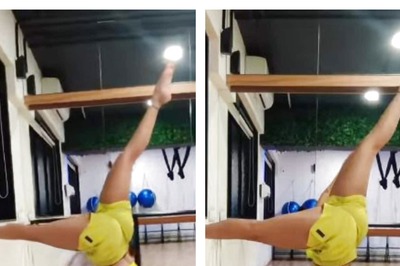
views
The United Nations needs $4.2 billion this year to provide humanitarian aid in Ukraine and to refugees who have fled, but feared a likely shortfall as the Gaza war dominates global attention.
Russia’s war in Ukraine is set to enter its third year in February and the UN said it was vital to maintain support, despite competing crises.
The UN hopes to reach 8.5 million people within Ukraine and 2.3 million refugees and their host communities in eastern Europe in 2024.
“Remember Ukraine?” UN aid chief Martin Griffiths asked as he launched the plan in Geneva.
“Please do not forget Ukraine while there are many other places in the world which grab our attention.
“As we go into 2024, the competition for funding is going to be more,” he acknowledged, citing the “considerable” costs of the Gaza conflict.
For Ukrainians, “humanitarian aid remains the lifeline, without which they will perish”, Griffiths stressed.
The full-scale Russian invasion of Ukraine in February 2022 was the biggest invasion of a European country since World War II and triggered the largest refugee crisis the continent has faced since the 1939-1945 conflict.
– ‘Great savagery’ –
Russia has intensified its aerial assaults on Ukraine in recent weeks. Bolstering its arsenal, it has geared up for a long war and reoriented its economy.
“The recent month has been a month of great savagery for the people of Ukraine… It’s a war that is going as fast and hard and harshly as ever,” Griffiths said.
The UN says 14.6 million people will need humanitarian assistance in Ukraine this year — 40 percent of the population — of which it will try to reach the 8.5 million most in need.
Griffiths said the highest priority was the 3.3 million people — “a shockingly high number” — living on the front line in eastern and southern Ukraine, including terrified, traumatised” children.
– 6.3 million refugees –
Some 6.3 million people have fled Ukraine and remain refugees, mostly across Europe.
Of the $4.2 billion, the regional refugee response plan is seeking $1.1 billion. It aims to reach 2.3 million refugees in 10 countries.
Only half of school-age Ukrainian refugee children are enrolled in schools in host countries, he said, while a quarter of refugees in need struggle to access health care. Only 40 to 60 percent are employed, the UN said.
Unlike other crises, “these people are not refugees from their government”, said UN refugees chief Filippo Grandi.
“They are fleeing from the occupation, the invasion and the Russian bombing.”
Later this week, Grandi will visit Moldova — the chief focus of the refugee aid programme — and then spend nearly a week in neighbouring Ukraine.
Besides the refugees outside Ukraine, Grandi noted that around four million Ukrainians have fled their homes but remain within the country’s borders.
Ukraine “remains the largest displacement crisis in the world”, he said.
– Focus on hardest-hit –
The 2023 humanitarian response plan for within Ukraine sought $3.9 billion and to date has been 67-percent funded. Aid workers reached 10.5 million people.
This year it is asking for $3.1 billion.
In its global humanitarian appeals this year, the UN has tried to rein in its objectives, seeking to prioritise those most in need with smaller appeals — in the hope that they will be more reliably funded.
Denise Brown, the UN humanitarian coordinator in Ukraine, told AFP the indications were that despite the reduced ask, countries would donate less this year, due to “the situation in other parts of the world which are devastating, which require support”.
Explaining the effects, she said that without funding, “we will start to see a dismantling of the humanitarian structure” in Ukraine.
“My number-one worry is getting through these winter months, making sure people stay warm… This is a huge concern,” she said.
Brown said that besides humanitarian aid, recovery and development funding would be needed in the longer term.
“Humanitarian (assistance) is supposed to be short term,” she said.




















Comments
0 comment